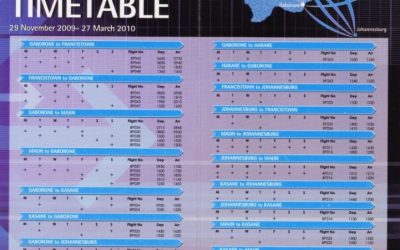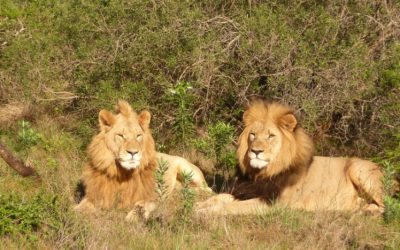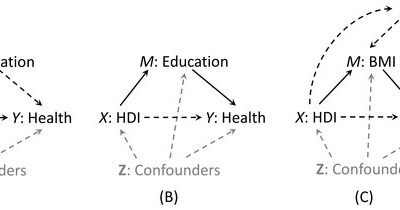Overview of the Botswana Diamond Mine Industry
The Botswana diamond mine industry is a vital sector that significantly contributes to the country’s economy and global diamond supply. Renowned for its rich deposits and strategic partnerships, Botswana has established itself as one of the world’s leading diamond producers. The industry combines advanced mining techniques with strong regulatory frameworks to ensure sustainable growth and value addition within the nation.
History and Development of Diamond Mining in Botswana
The Botswana diamond mine industry is one of the most prominent and globally significant sectors of the country’s economy. Renowned for its high-quality diamonds, Botswana has established itself as a leading producer and exporter, contributing substantially to national revenue and development. The country’s strategic partnerships with international corporations, notably De Beers, have played a crucial role in shaping its diamond industry.
The history of diamond mining in Botswana dates back to the 1960s, shortly after gaining independence from British rule in 1966. The discovery of diamonds in the Orapa region in 1967 marked the beginning of the country’s journey into the diamond industry. Recognizing the potential, the government formed the Debswana Mining Company in partnership with De Beers, which facilitated the development of large-scale mining operations and infrastructure. Over the years, additional major deposits such as Jwaneng and Letlhakane were discovered, further elevating Botswana’s position in the global diamond market.
Development in Botswana’s diamond industry has focused on sustainable growth, technological advancement, and value addition through polished diamond manufacturing. The government has implemented policies to ensure that the industry benefits the country economically and socially. The establishment of the Botswana Diamond Trading Company has improved the efficiency of diamond sales and marketing. Continued exploration, investment in cutting-edge mining technology, and a commitment to environmental sustainability have helped maintain Botswana’s reputation as a stable and reliable source of high-quality diamonds globally.
Key Diamond Mines in Botswana
The Botswana diamond mine industry is a significant sector of the country’s economy, known for its high-quality diamonds and substantial global market share. Botswana stands as one of the world’s leading producers of gem-quality diamonds, with a well-established reputation for sustainable and responsible mining practices. The industry has played a crucial role in national development, providing employment and contributing to infrastructural growth.
Among the key diamond mines in Botswana, the Jwaneng Mine is renowned as the world’s richest diamond deposit by value, contributing significantly to the country’s diamond revenues. The Orapa Mine, operated by Debswana, is one of the largest open-pit diamond mines globally and has been a cornerstone of Botswana’s diamond industry since its inception. Another notable mine is the Letlhakane Mine, which complements the operational portfolio of Debswana and focuses on smaller diamond deposits.
These mines, along with others like the Damtshaa Mine, operate under government partnership with De Beers, ensuring that Botswana maintains a strategic stake in the industry. The continuous exploration and development of new deposits are vital to sustain Botswana’s position in the global diamond market and support economic stability.
Government Policies and Mining Regulations
The Botswana diamond mine industry is a critical component of the country’s economy, renowned for its high-quality diamonds and global significance. The nation hosts some of the world’s largest diamond mines, including the Jwaneng, Orapa, and Karowe mines, which contribute substantially to national revenue and employment. Botswana’s industry benefits from its strategic partnerships with major international mining companies, ensuring efficient extraction and marketing of its diamond resources.
The government of Botswana maintains a proactive approach to managing its diamond resources through policies that promote sustainable development and economic diversification. It owns a major stake in its diamond mining operations, notably through Debswana, a joint venture with De Beers. This ownership structure allows the government to influence industry practices and ensure that diamond wealth benefits the broader population.
Mining regulations in Botswana are designed to provide a clear legal framework for the sustainable and responsible development of mineral resources. The Mineral Policy of Botswana emphasizes transparency, environmental stewardship, and investment incentives to attract foreign investment while safeguarding national interests. Licensing procedures, environmental impact assessments, and operational standards are strictly regulated to promote responsible mining practices.
Overall, Botswana’s diamond mine industry is characterized by a balanced approach to resource development, economic benefits, and regulatory oversight, positioning the country as a leading player in the global diamond market.
Major Diamond Mines in Botswana
Botswana is renowned for its rich diamond deposits, making it one of the world’s leading sources of high-quality diamonds. The country hosts several major diamond mines that play a crucial role in its economy and global gemstone supply. These mines not only contribute significantly to Botswana’s development but also highlight the nation’s strategic importance in the global diamond industry.
Jwaneng Mine
The Jwaneng Mine in Botswana is one of the world’s most significant and valuable diamond mines, renowned for its high-quality gemstones and immense production capacity. Located in the southern part of the country, it is operated by Debswana, a joint venture between the Botswana government and De Beers. As the world’s richest diamond mine by value, Jwaneng produces several million carats annually, contributing significantly to Botswana’s economy. The mine’s establishment has transformed the nation into a leading diamond exporter, bolstering national development and employment. Its efficient mining operations and cutting-edge technology ensure sustainable extraction of diamonds while maintaining environmental standards. Overall, Jwaneng remains a key player in the global diamond industry and a vital asset for Botswana’s economic growth and development.
Orapa Mine
The Orapa Diamond Mine is one of the major diamond mines located in Botswana and is renowned for its significant contribution to the country’s diamond industry. It is operated by Debswana, a joint venture between the government of Botswana and De Beers. Established in 1971, the Orapa Mine is one of the largest diamond-producing mines in the world, contributing substantially to Botswana’s economy. The mine features extensive open-pit operations and has a remarkable annual production output, making it a key player in the global diamond market. Its rich deposits and efficient mining processes have helped Botswana maintain a prominent position as a leading diamond exporter and continue to support its economic development. The Orapa Mine, along with other major diamond mines in Botswana, exemplifies the country’s reputation as the “Diamond Capital of the World,” attracting international attention for its high-quality gemstones and sustainable mining practices.
Letlhakane Mine
Botswana is renowned for its rich diamond resources, with several major diamond mines contributing significantly to the country’s economy. Among these, the Letlhakane Mine stands out as one of the key diamond-producing operations in Botswana. Located in the central parts of the country, Letlhakane Mine is operated by Debswana, a joint venture between De Beers and the Botswana government. The mine primarily extracts kimberlite ore, which contains valuable diamond deposits. Over the years, it has played a crucial role in sustaining Botswana’s position as one of the world’s leading diamond producers. The mine employs advanced mining techniques and prioritizes sustainable practices to ensure long-term profitability and environmental preservation. As part of Botswana’s broader strategy, the Letlhakane Mine continues to contribute significantly to the national economy, providing employment opportunities and supporting infrastructure development across the region.
Karowe Mine
Botswana is renowned for its significant diamond mining industry, with several major mines contributing to its reputation as a leading diamond producer. Among these, the Karowe Mine stands out as one of the most important and technologically advanced diamond mines in the country. Located in the northern part of Botswana, the Karowe Mine is operated by Lucara Diamond Corporation and has gained worldwide recognition for its high-quality and large gem-quality diamonds.
Operational Aspects of Botswana Diamond Mines
Botswana’s diamond mines are a vital component of the country’s economy, renowned for their high-quality stones and efficient operational practices. These mines employ advanced technology and sustainable methods to ensure ongoing productivity while minimizing environmental impact. Understanding the operational aspects of Botswana’s diamond industry provides insight into how the nation maintains its position as a leading global supplier of diamonds.
Mining Techniques and Technologies Used
Botswana is renowned for its significant diamond mining industry, which plays a crucial role in the country’s economy. The operational aspects of Botswana’s diamond mines involve large-scale extraction processes designed to maximize efficiency and sustainability. These operations typically include open-pit and underground mining techniques tailored to the geological characteristics of each mine. Advanced geophysical surveys and drilling are employed to locate diamond-rich kimberlite pipes accurately. Mining companies utilize modern machinery such as hydraulic excavators, bulldozers, and large front-end loaders to extract ore efficiently.

The technologies used in Botswana’s diamond mining sector are highly sophisticated, focusing on automation and precision. Heavy-duty equipment is integrated with computerized control systems to optimize extraction and reduce environmental impact. Diamond processing involves crushing and sorting plants where ore is screened, crushed, and washed to separate diamonds from surrounding material. Mining operations also utilize dense media separation and X-ray sorting technologies to improve recovery rates. Furthermore, Botswana’s mines implement digital monitoring systems and data analytics to oversee operations, enhance safety protocols, and ensure sustainable practices.
Extraction and Processing Methods
Botswana is renowned for its significant diamond mining operations, which play a crucial role in the country’s economy. The operational aspects of these mines involve a combination of advanced extraction techniques and efficient processing methods to maximize yield and ensure sustainable practices. The primary extraction method used in Botswana is open-pit mining, suited for the large, near-surface deposits found in the region. This method involves removing large quantities of overburden to access the underlying diamond-bearing kimberlite pipes.
Once the ore is extracted, it is transported to processing plants where it undergoes various stages to recover the diamonds. The initial stage typically involves crushing and screening to reduce the ore size. This is followed by dense media separation or X-ray sorting technologies that help identify diamond-bearing material from the rest of the rock. The use of modern machinery and automation enhances the efficiency and precision of these processes.
Further processing includes gravity separation techniques such as jigs and sluicing, which help optimize diamond recovery. Recently, there has been a shift towards more environmentally sustainable operations, incorporating water recycling systems and minimizing tailings. The overall operational aspect emphasizes safety, environmental management, and the application of cutting-edge technology to maintain Botswana’s position as a leading diamond producer globally.
Staffing and Workforce Management
The operational aspects of Botswana’s diamond mines are characterized by sophisticated management strategies focused on efficiency, safety, and sustainable development. Central to these operations is effective staffing and workforce management, ensuring that the mines operate smoothly while maintaining high standards of employee well-being and productivity.
- Skilled Workforce: Botswana diamond mines employ a diverse range of skilled professionals, including geologists, mining engineers, safety experts, and administrative personnel.
- Recruitment and Local Employment: The mining companies prioritize local hiring to boost the national economy and foster community relations, often providing training programs for local residents.
- Workforce Training: Continuous training initiatives are implemented to keep staff updated on latest mining technologies, safety protocols, and environmental practices.
- Safety Management: Strict safety standards and procedures are enforced to protect workers from potential hazards associated with mining activities.
- Shift Management: Operations typically run on shift systems to ensure 24/7 productivity, with detailed planning to balance workforce fatigue and operational needs.
- Worker Welfare: Facilities such as health clinics, recreational areas, and housing are provided to enhance worker satisfaction and retention.
- Remote Workforce Coordination: Advanced communication and management systems are employed to coordinate on-site and off-site teams effectively.
Economic Impact
The economic impact of the Botswana diamond mine has significantly shaped the country’s development and global reputation within the mining sector. As one of the world’s leading producers of diamonds, Botswana has benefited from the industry through increased revenue, employment opportunities, and infrastructure growth. The mine’s contributions extend beyond finance, fostering social and technological advancement that supports sustainable progress in the region.
Contribution to Botswana’s Economy
The Botswana diamond mine plays a crucial role in the country’s economy by contributing significantly to national revenue and employment. As one of the world’s leading producers of diamonds, Botswana benefits from the export earnings generated by the mining sector, which supports infrastructure development and social programs. Additionally, the mines foster local employment opportunities and stimulate growth in related industries such as transportation, processing, and retail. Overall, the Botswana diamond mine is a vital driver of economic stability and sustainable development in the country.

Revenue and Foreign Investment
The Botswana diamond mine has significantly contributed to the country’s economic development by generating substantial revenue and attracting foreign investment. The mining sector, particularly diamond extraction, is a primary source of national income, providing essential funds for infrastructure, healthcare, and education projects. Foreign investors are drawn to Botswana’s stable political environment, transparent mining policies, and rich diamond reserves, which foster fruitful international partnerships. Overall, the mine bolsters Botswana’s position in the global gemstone market, ensuring sustained economic growth and enhanced foreign direct investment inflows.
Employment and Community Development
The Botswana diamond mine has significantly contributed to the country’s economic growth by generating substantial revenue through the export of rough and polished diamonds. This industrial activity has bolstered Botswana’s status as one of the world’s leading diamond producers, positively influencing its GDP and fiscal stability.
In terms of employment, the diamond mine has created numerous jobs across various sectors, including mining, processing, logistics, and support services. This has helped improve the standard of living for many local communities and provided opportunities for skills development and vocational training.
The community development initiatives linked to the Botswana diamond mine include infrastructure improvements such as roads, healthcare facilities, and educational institutions. Furthermore, the mine’s social investment programs support local communities by funding sustainable projects, promoting economic diversification, and fostering long-term growth and stability.
Environmental and Social Considerations
The development and operation of diamond mines in Botswana involve carefully assessing environmental and social considerations to ensure sustainable growth. Balancing economic benefits with the protection of natural ecosystems and local communities is essential for responsible mining practices. By addressing these factors, Botswana can maintain its reputation as a leader in responsible resource management while maximizing the long-term benefits of its diamond industry.
Environmental Management Practices
The Botswana diamond mine prioritizes environmental and social considerations to ensure sustainable development and community well-being. Implementing effective environmental management practices is essential to minimize ecological impact and promote responsible resource utilization.
- Conducting comprehensive environmental impact assessments before project initiation to identify potential risks and mitigation measures.
- Implementing water conservation and recycling programs to reduce water consumption and protect local water sources.
- Employing dust suppression techniques and controlling emissions to minimize air pollution during mining operations.
- Restoring disturbed land through rehabilitation and reforestation efforts after mining activities are completed.
- Engaging local communities in decision-making processes to ensure social benefits and address concerns related to land use and livelihood impacts.
- Adopting eco-friendly extraction technologies that reduce energy consumption and greenhouse gas emissions.
- Monitoring biodiversity and protecting sensitive habitats from adverse effects of mining activities.
Social Responsibility and Community Engagement
The Botswana diamond mine prioritizes environmental and social considerations by implementing sustainable mining practices and fostering positive community relationships. The company aims to minimize ecological impact through responsible resource management and adherence to environmental regulations, ensuring the preservation of local ecosystems. Social responsibility is a core aspect of their operations, emphasizing fair employment, safe working conditions, and supporting community development initiatives. Engagement with local communities helps address their needs and promotes shared economic growth, enhancing social wellbeing across the region.
- Implementing environmentally sustainable mining techniques to reduce ecological footprint
- Promoting safe and fair working conditions for all employees
- Supporting local community projects related to health, education, and infrastructure
- Engaging stakeholders through transparent communication and participatory decision-making
- Ensuring compliance with national and international environmental and social standards
Challenges and Sustainability Initiatives
The Botswana Diamond Mine is a significant contributor to the country’s economy, but it also faces important environmental and social considerations. The mining activities can lead to habitat destruction, water pollution, and land degradation, which threaten local ecosystems and biodiversity. Social challenges include ensuring the well-being of displaced communities, labor rights, and equitable sharing of wealth generated from mining. To address these issues, the mine has adopted various sustainability initiatives such as water recycling, habitat restoration projects, and community development programs. These efforts aim to minimize environmental impact while promoting social responsibility and sustainable economic growth in Botswana, ensuring that the benefits of diamond mining are balanced with the need to protect the environment and support local communities.
Future Prospects and Developments
The future prospects and developments for Botswana’s diamond mine industry hold significant promise as the nation continues to leverage its rich mineral resources. Advancements in mining technology and sustainable practices are expected to enhance extraction efficiency while minimizing environmental impact. With ongoing investments and innovative innovations, Botswana aims to solidify its position as a leading global diamond producer, ensuring economic growth and development for the country.
Exploration and New Mining Opportunities
Future prospects and developments in Botswana’s diamond industry hold significant promise due to ongoing advancements in mining technology and rising global demand for precious gemstones. The country’s strategic location and established infrastructure position it as a key player in the international diamond market, with potential for expanding production capabilities and enhancing operational efficiency.
Exploration efforts are increasingly focused on uncovering new diamond deposits within Botswana’s mineral-rich regions. Innovative geological surveys and remote sensing technologies are helping to identify promising sites, encouraging investment in new mining projects. These endeavors aim to unlock additional resources, extending the lifespan of existing mines and opening up fresh opportunities for economic growth.
In terms of new mining opportunities, Botswana is actively exploring collaborations with international partners and leveraging sustainable practices to attract investments. Projects aimed at developing underground mining techniques and processing facilities are being considered to boost output while minimizing environmental impact. The future landscape of Botswana’s diamond sector looks poised for substantial growth, driven by technological innovation, strategic exploration, and robust industry partnerships.
Technological Innovations in Diamond Mining
The future prospects for diamond mining in Botswana are promising, driven by technological innovations that are transforming the industry. Advances such as automated drilling, real-time data analysis, and AI-powered exploration methods are increasing efficiency and reducing environmental impact. These innovations enable more precise targeting of diamond deposits, improving extraction rates and reducing waste. Additionally, the integration of sustainable mining practices supported by modern technology is helping Botswana maintain its reputation as a responsible miner while expanding its resource base. As technology continues to evolve, it is expected that Botswana will remain a leading player in the global diamond market, benefiting from increased productivity and improved sustainability standards.
Market Trends and Global Demand
The future prospects for the Botswana diamond mine are promising, driven by ongoing investments in exploration and technology advancements that aim to boost extraction efficiency and extend the mine’s operational life. As global demand for high-quality diamonds remains strong, particularly in emerging markets and luxury sectors, Botswana is well-positioned to maintain its status as a leading diamond producer. Market trends indicate a shift towards more sustainable and ethically sourced gemstones, encouraging mines to adopt environmentally friendly practices and transparent supply chains. Additionally, global demand is anticipated to grow further with increasing consumer interest in luxury goods, fueling the need for refined, responsibly sourced diamonds from Botswana’s rich deposits. This combination of technological innovation, sustainability efforts, and market appetite underscores a positive outlook for the sector’s development in the coming years.





0 Comments